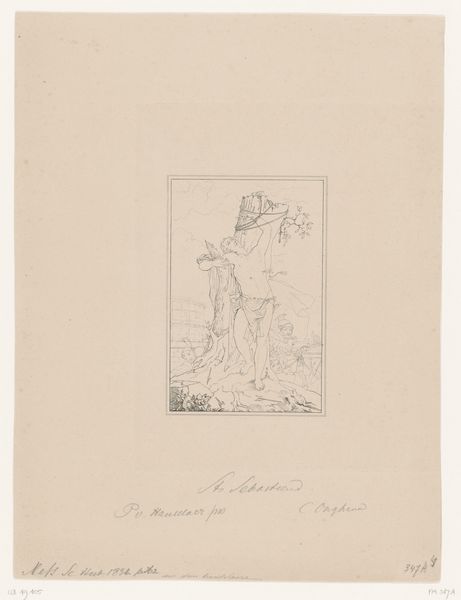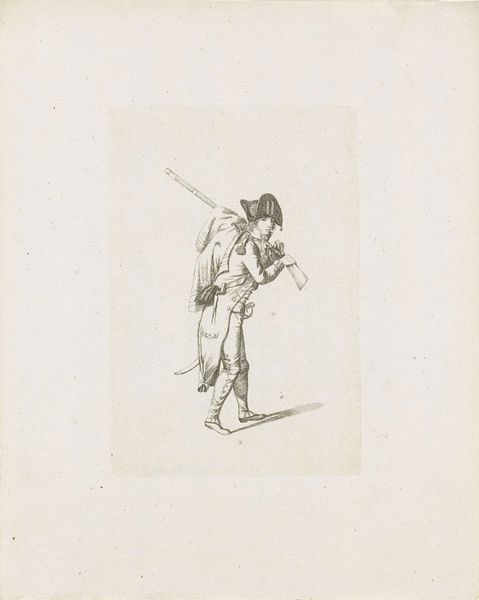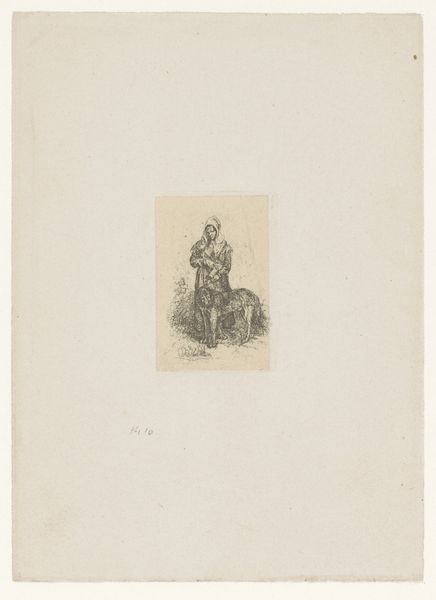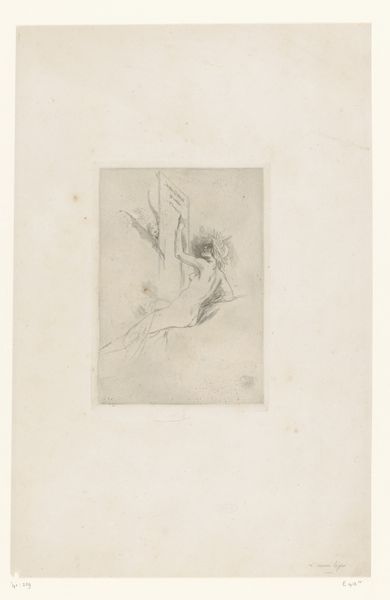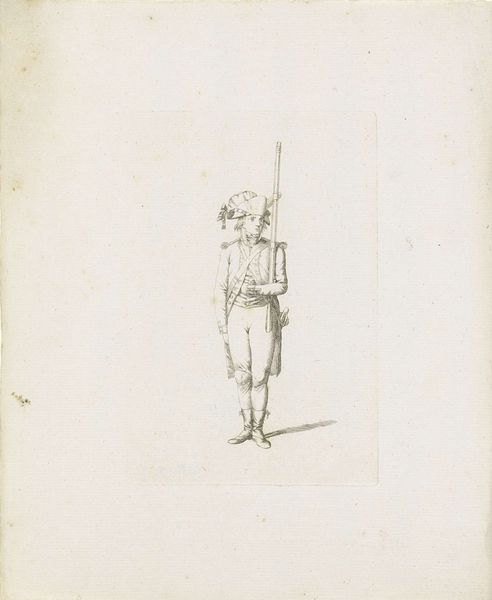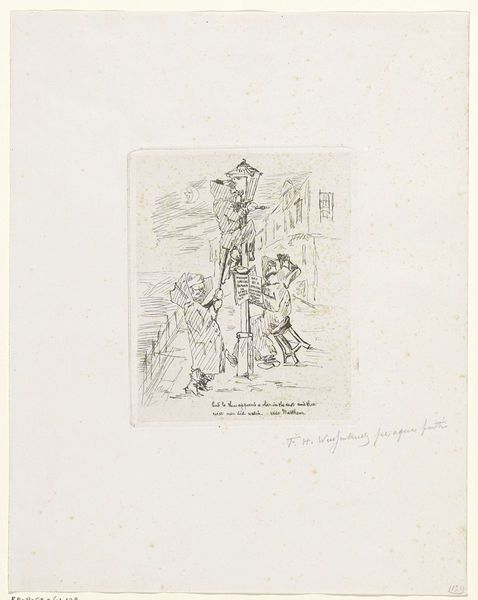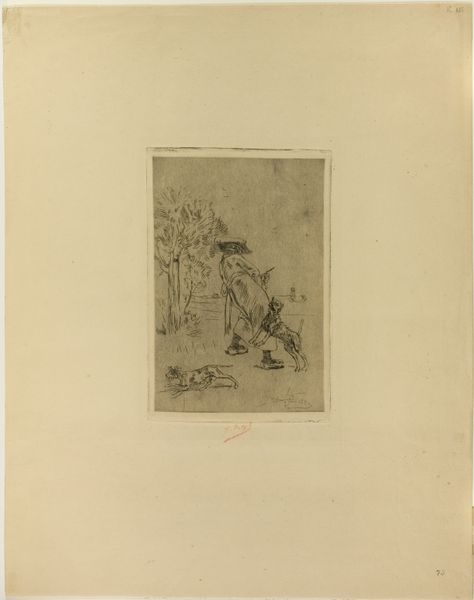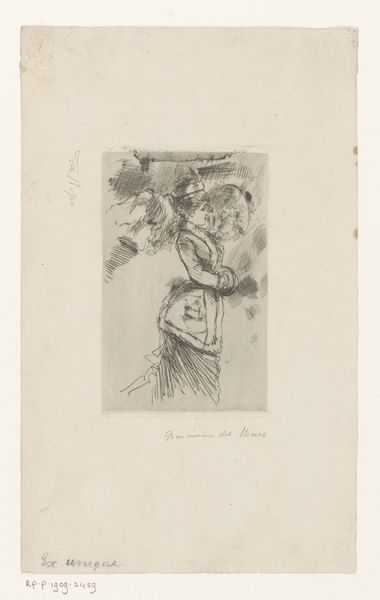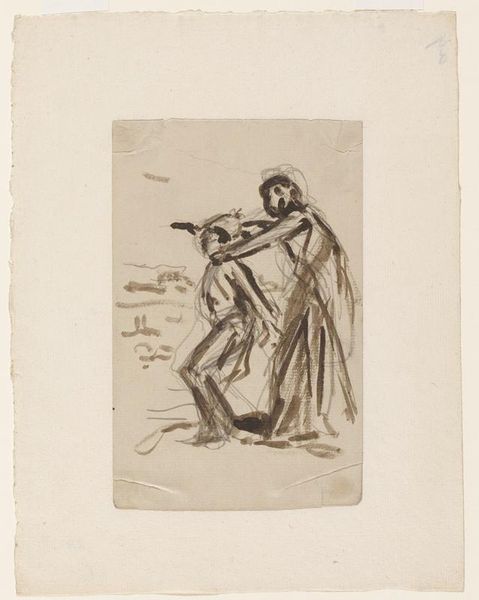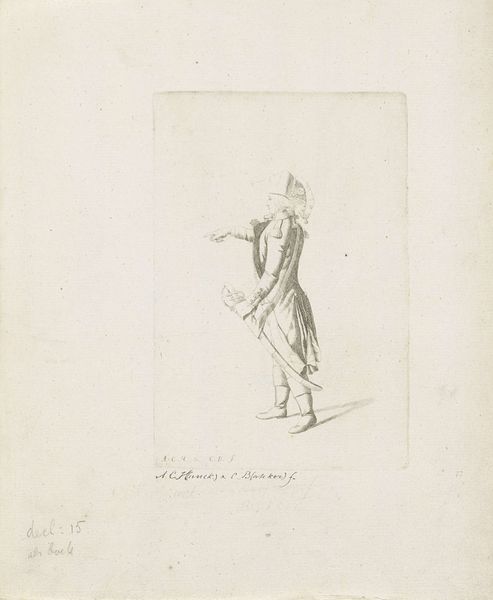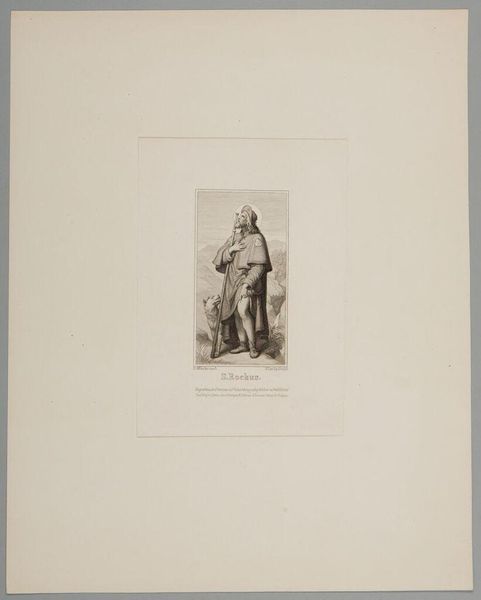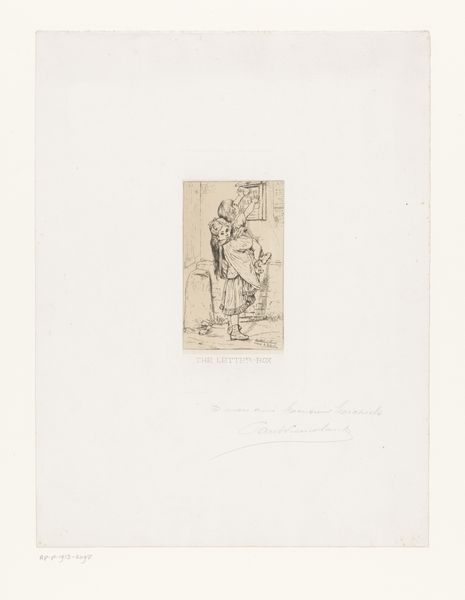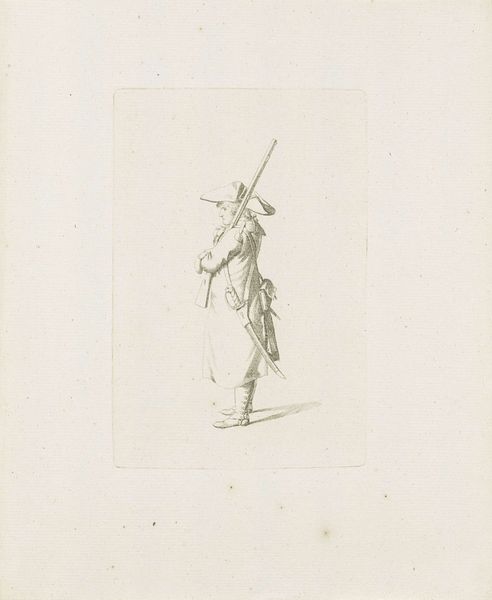
drawing, paper, ink
#
portrait
#
drawing
#
aged paper
#
toned paper
#
light pencil work
#
blue ink drawing
#
old engraving style
#
figuration
#
paper
#
personal sketchbook
#
ink
#
ink drawing experimentation
#
romanticism
#
sketchbook drawing
#
watercolour illustration
#
genre-painting
#
sketchbook art
Dimensions: height 110 mm, width 73 mm
Copyright: Rijks Museum: Open Domain
Editor: Here we have "Man met stok, op zijn rug gezien," or "Man with stick, seen from his back," created by Ernst Willem Jan Bagelaar sometime between 1798 and 1837, using ink and paper. It’s rendered in delicate lines and the subject seems…vulnerable. What strikes you when you look at this drawing? Curator: I notice immediately how this work fits within broader social shifts regarding the representation of common people. Before the late 18th century, art overwhelmingly depicted the elite. Genre scenes depicting ordinary individuals started to gain traction, reflecting burgeoning democratic ideals and shifting patronage patterns. This drawing appears almost like a sociological study. Do you think there’s something artificial about it? Editor: A sociological study? It feels more like a casual observation. Almost like a page from a sketchbook? Curator: Exactly. That contributes to the feeling of authenticity, a critical concept emerging within Romanticism. There's an emphasis on sincere portrayal of nature and humanity, contrasted against the artificiality and formality associated with aristocracy. The artist places a commoner, complete with simple attire and walking stick, centrally in his composition. Does it evoke feelings of empathy or otherness? Editor: Hmmm. Maybe empathy, there’s something unassuming about his stance, head bowed and he is kind of walking away. It does humanise what might otherwise be considered an anonymous figure. But who was consuming these images of ordinary folk, and why? Curator: Exactly the right questions to ask. The rising middle class fuelled demand. The emergence of printmaking also played a role making such imagery accessible beyond aristocratic circles, normalising their place in artistic settings, changing viewing habits. The man may stand as an emblem of social changes of the period, as his pose creates a feeling of separation. How might one imagine his interior life from how he is portrayed in art? Editor: So much to consider beyond the image itself. It shows that every artwork participates in wider social changes, often unseen when you focus on its mere appearance. Thank you! Curator: Precisely! By thinking about the socio-historical framework of "Man met stok," we appreciate that it is far more than just an anonymous portrait of a man.
Comments
No comments
Be the first to comment and join the conversation on the ultimate creative platform.
